MUSSAENDA
Mussaenda
Burm. ex L., Sp. Pl. 177. 1753; Gen. Pl. ed. 5. 82. 1754; Benth. & Hook. f., Gen. Pl. 2: 64. 1873; Hook. f., Fl. Brit. Ind. 3: 86. 1880; Cooke, Fl. Pres. Bomb. 2: 596. 1902; Bor & Raizada, Beaut. Ind. Climb. & Shrubs 79. 1954; Bailey, Stand. Cycl. Hort. 2: 2089. 1950; Tao & Taylor, Fl. China @ eFloras.org 19: 231; Nazim & Qaiser, Fl. Pak. @ eFloras.org p. 11.
Usually shrubs, erect or climbing. Leaves opposite, occasionally ternately whorled (3-whorled). Stipules interpetiolar, entire or bifid, deciduous. Flowers in terminal cymes: simple, paniculate or thyrsiform; bracts and bracteoles small, deciduous. Flowers sessile to pedicellate, bisexual, actinomorphic or zygomorphic, epigynous. Calyx tube oblong or turbinate; lobes 5, one lobe often transformed into a large white or coloured leaf (calcophyll), in some cultivated ornamental species all the calyx lobes developed into calcophylls. Corolla usually yellow, tubular below, funnelform above; tube usually slender then abruptly inflated around anthers, inside variously pubescent; lobes 5, valvate in bud, spreading in the open flower, often long acuminate. Stamens 5, inserted in the middle or upper part of corolla tube; filaments short; anthers linear. Ovary inferior, 2-locular, each loculus with many ovules on axile placentas; stigma 2-lobed, lobes linear, included or exserted. Fruit a fleshy berry, many-seeded, seeds minute.
183 species
Mussaenda erythrophylla
Mussaenda erythrophylla
Schumach. & Thonn., Beskr. Guin. Pl. 116. 1827; M. splendida Welw. Trans. Linn. Soc. London 27: 36. 1869.
A large spreading ornamental shrub, branchlets terete and tomentose. Leaves opposite; petioles up to 3 cm long, tomentose; leaf blade up to 12 cm x 8 cm, ovate, elliptic, elliptic-ovate, apex acute, acuminate or occasionally obtuse, margin entire, base cordate; both surfaces pubescent; lateral nerves 7-10 pairs; stipules interpetiolar, bifid, ovate to triangular, tomentose red. Inflorescence terminal paniculate cymes, generally each branch with 3 flowers, pubescent. Flowers bisexual, zygomorphic, epigynous. Pedicels ca. 8 mm long, tomentose. Bracts ca. 6 mm long, tomentose. Calyx tube / hypanthium ca. 3.5 mm x 2 mm, tomentose red; lobes 5, lanceolate, ca. 1-1.5 cm long, tomentose red, one lobe generally small; in some flowers one calyx lobe expanded into large showy scarlet, stipitate, ovate, tomentose calcophyll (up to 8 cm x 5.2 cm; stipe 8 mm long); calcophyll with 3-5 principal nerves, secondary and tertiary nerves reticulately arranged, apex acute or obtuse. Corolla funnelform; tube ca. 2.5 cm long, narrow at base becoming broad above with stamens inside, tube tomentose red outside and pubescent inside; limb ca. 2 cm across, pink-white, adaxially with cushion of blood-red felt in throat, scarlet and tomentose abaxially, lobes 10 mm x 6 mm, ovate, acuminate. Stamens 5, inserted in upper part of corolla tube; filaments small, ca. 1.5 mm long, with few long hairs; anthers ca. 5 mm long, dorsifixed. Disc annular, fleshy, above the level of ovary. Ovary inferior, ca. 3.5 x 2 mm, 2-locular, many ovules per loculus, placentation axile; style short; stigmas 2-lobed, lobes linear, included. Fruit a many-seeded berry, ca. 7 mm x 7 mm.
Common Names: Ashanti Blood, Red Flag Bush, Tropical Dogwood
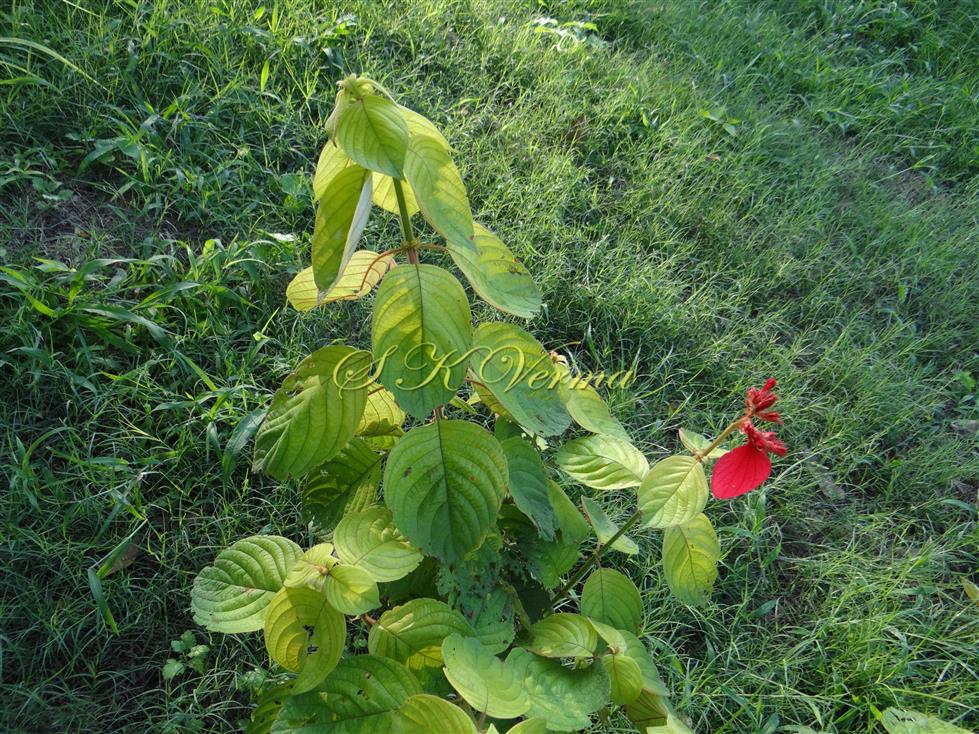
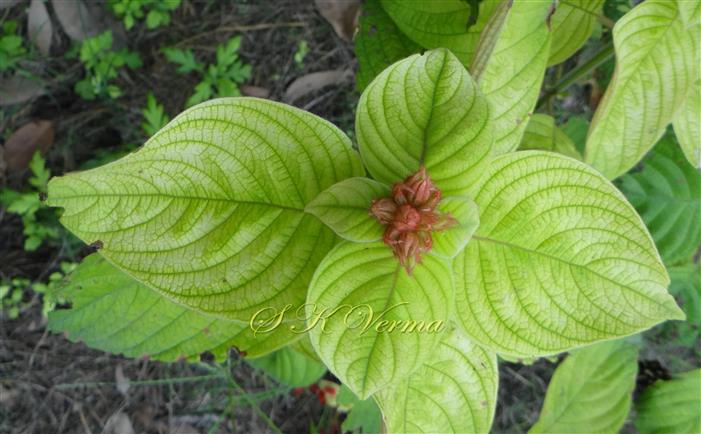
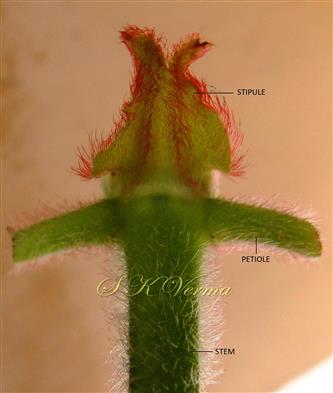
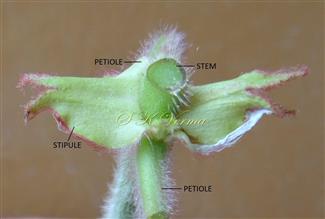
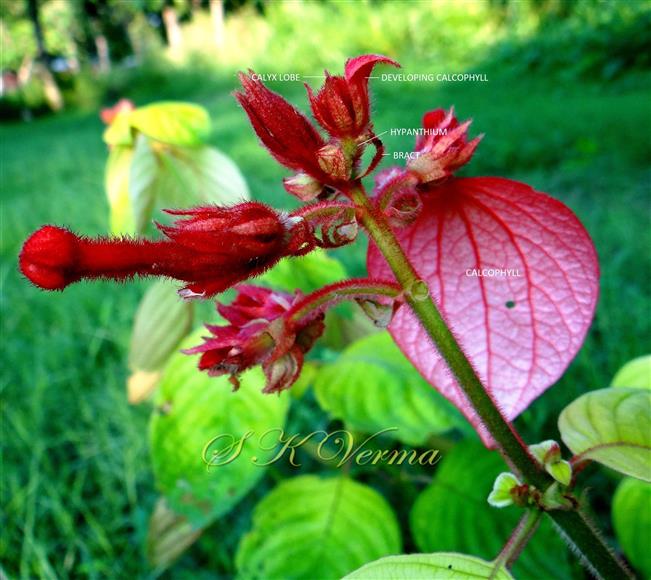
-DSC07199.jpg)
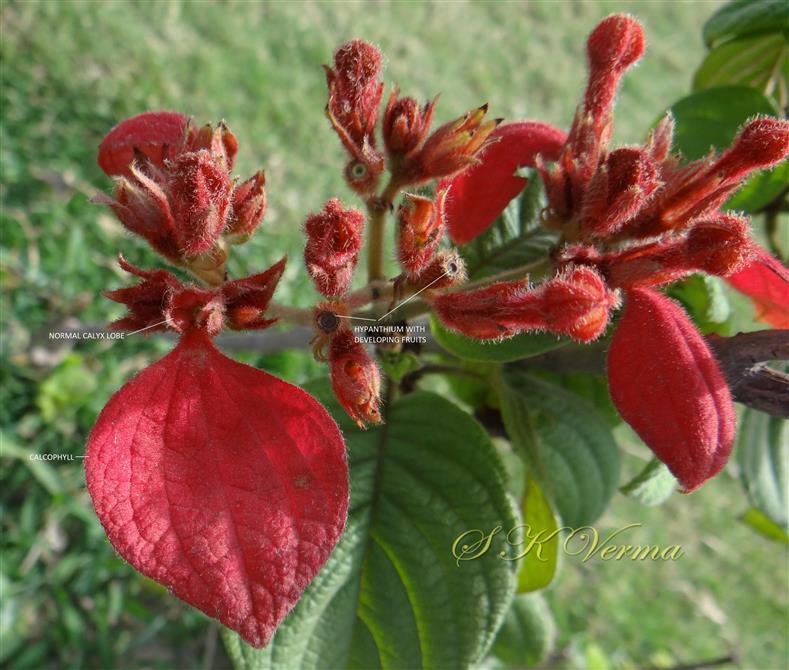
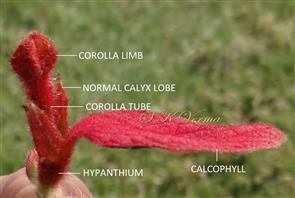
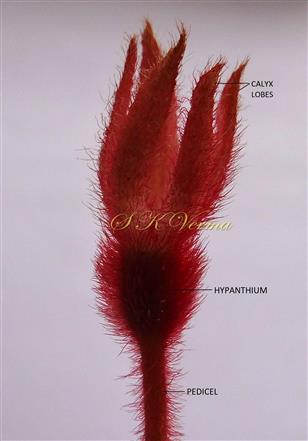
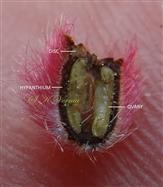
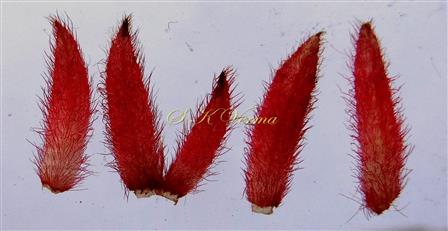
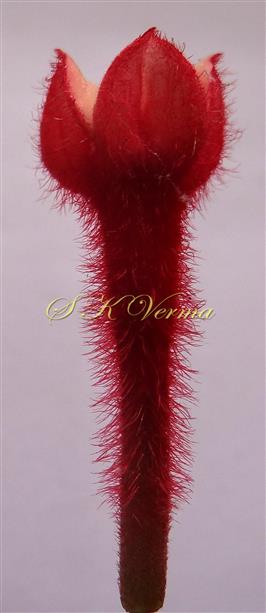
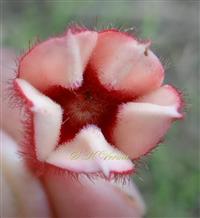
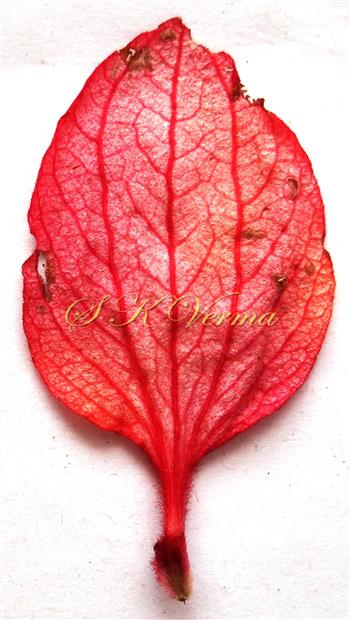
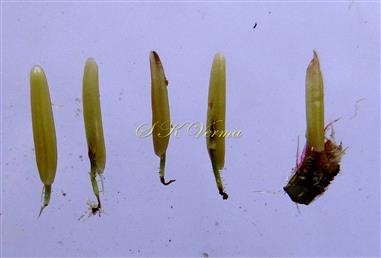






-DSC07199.jpg)








